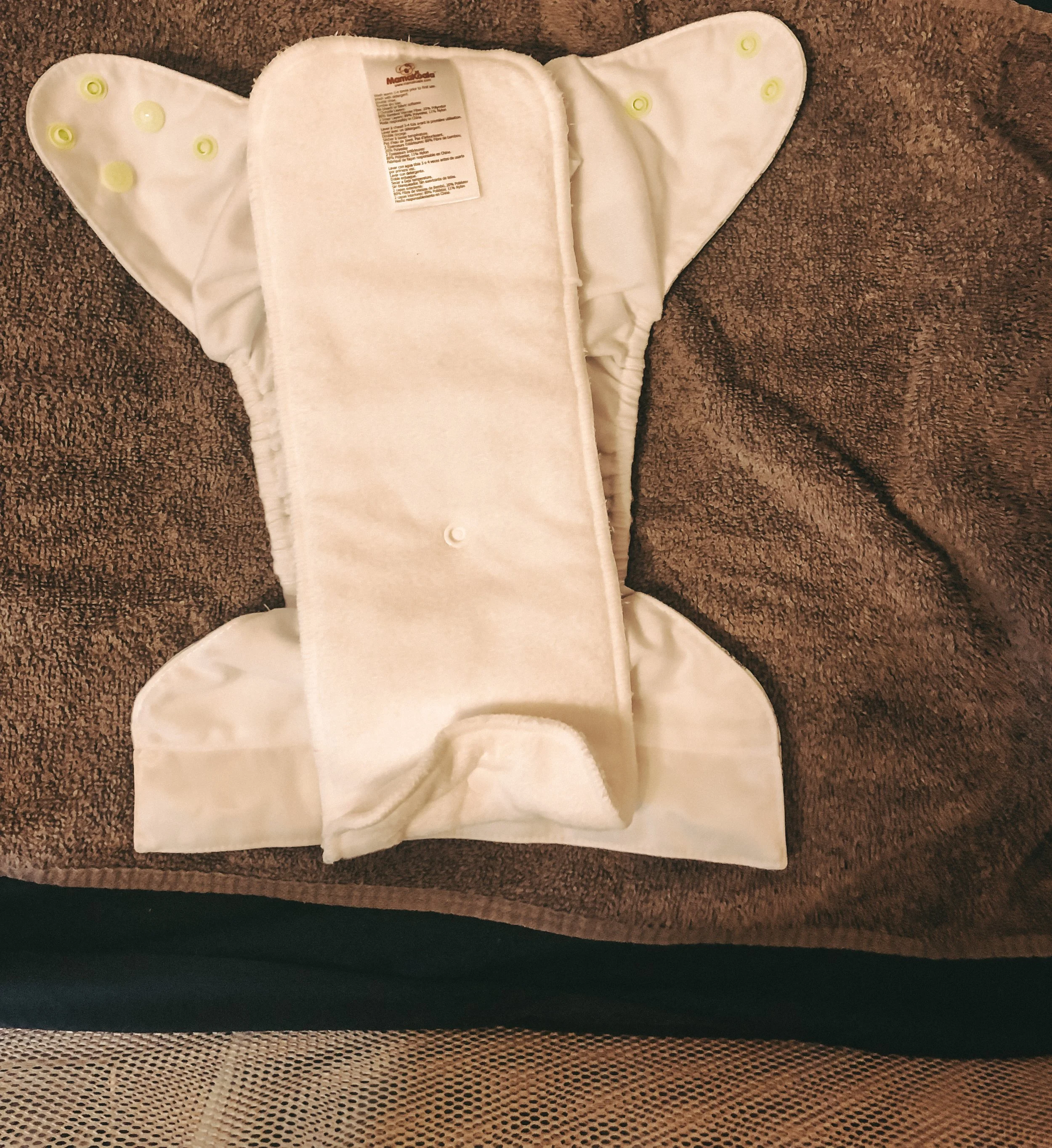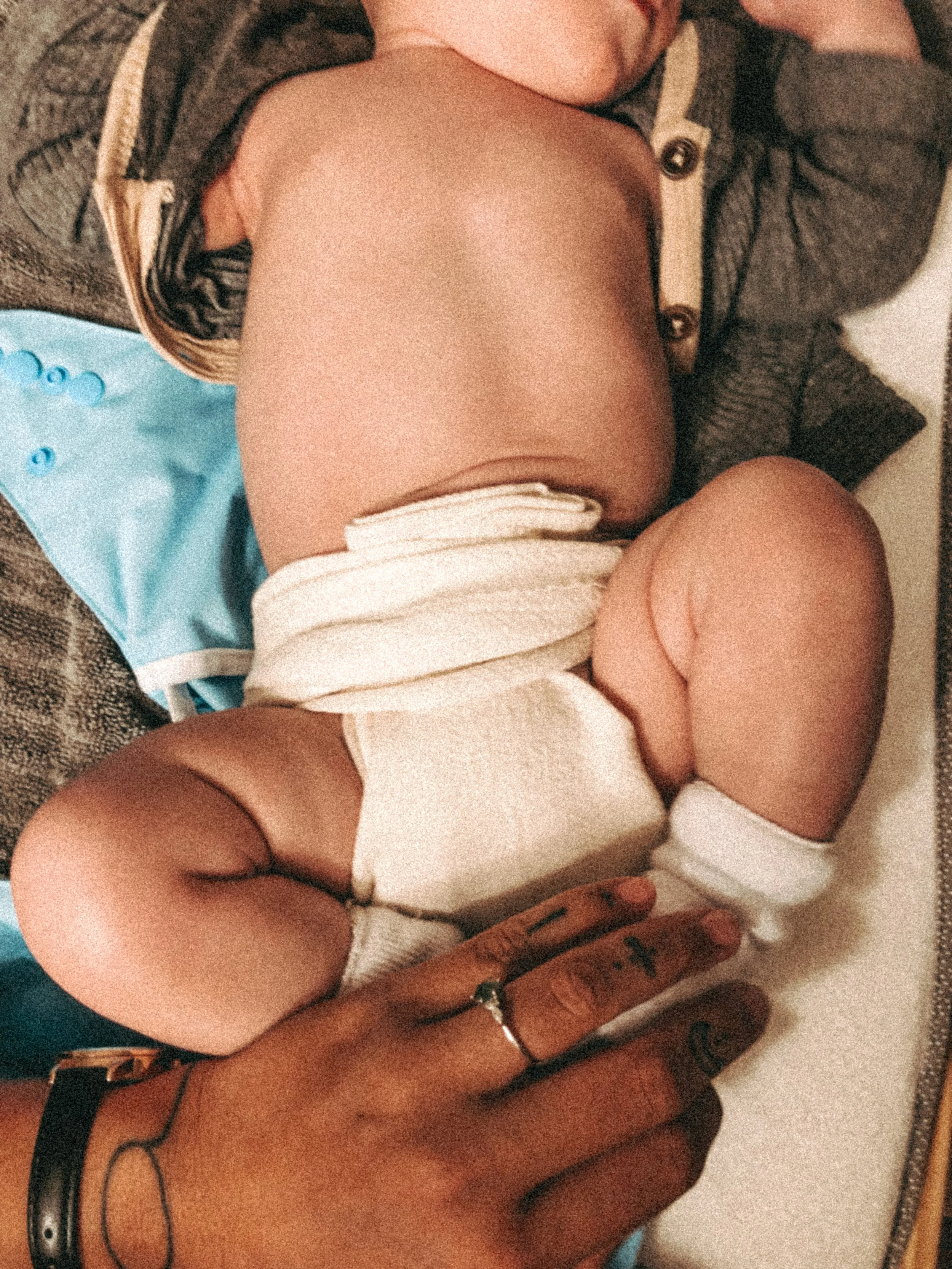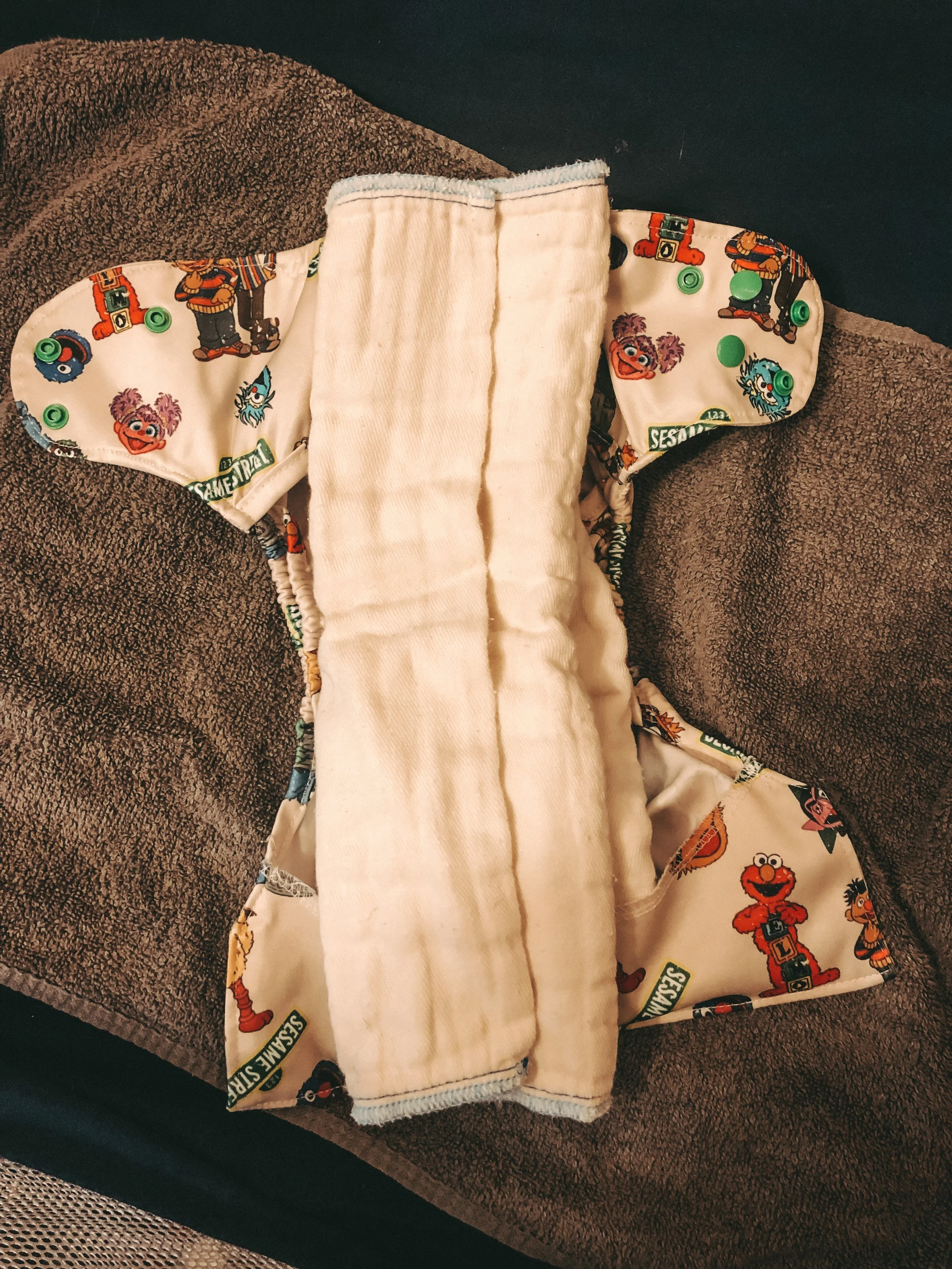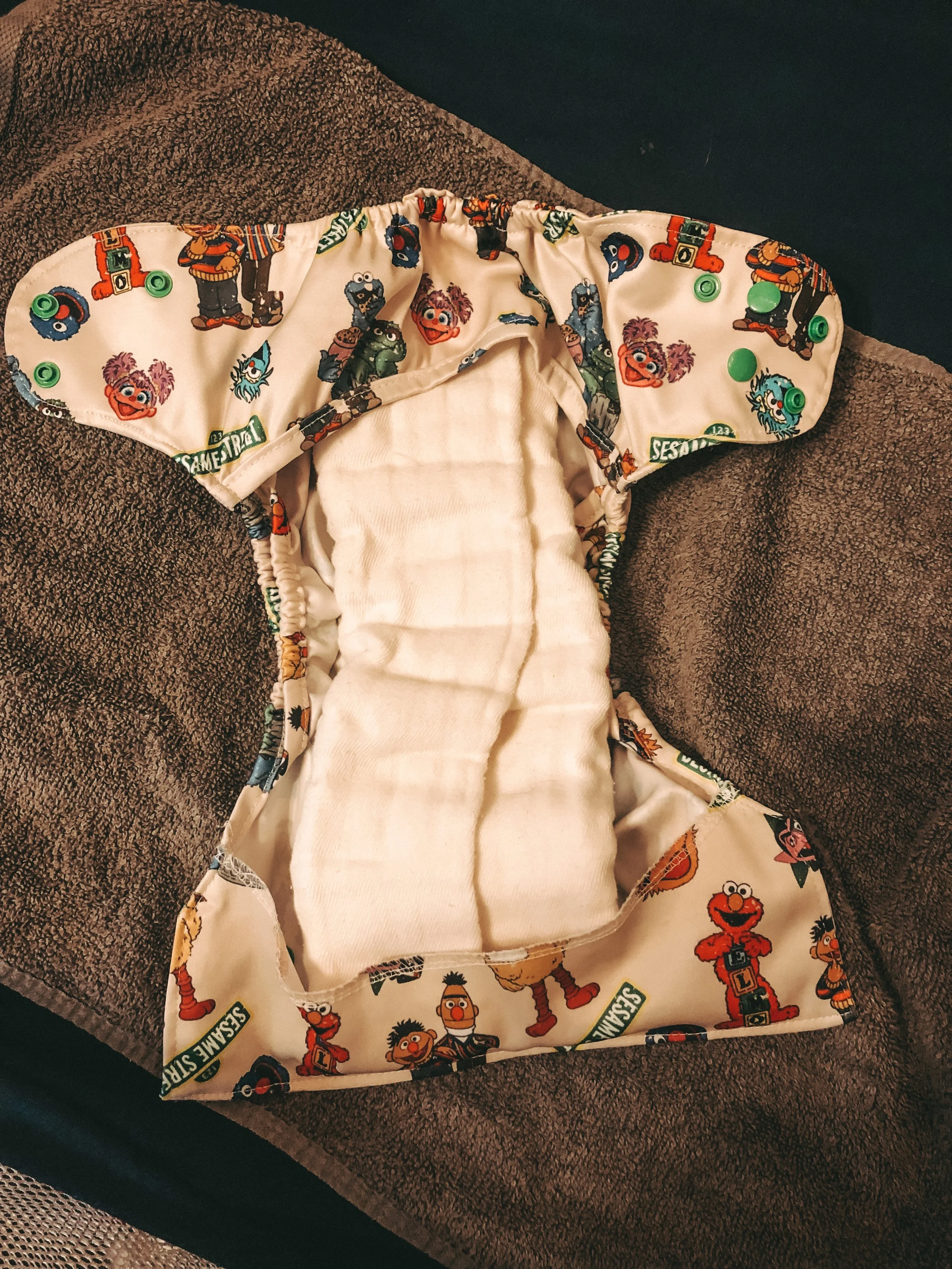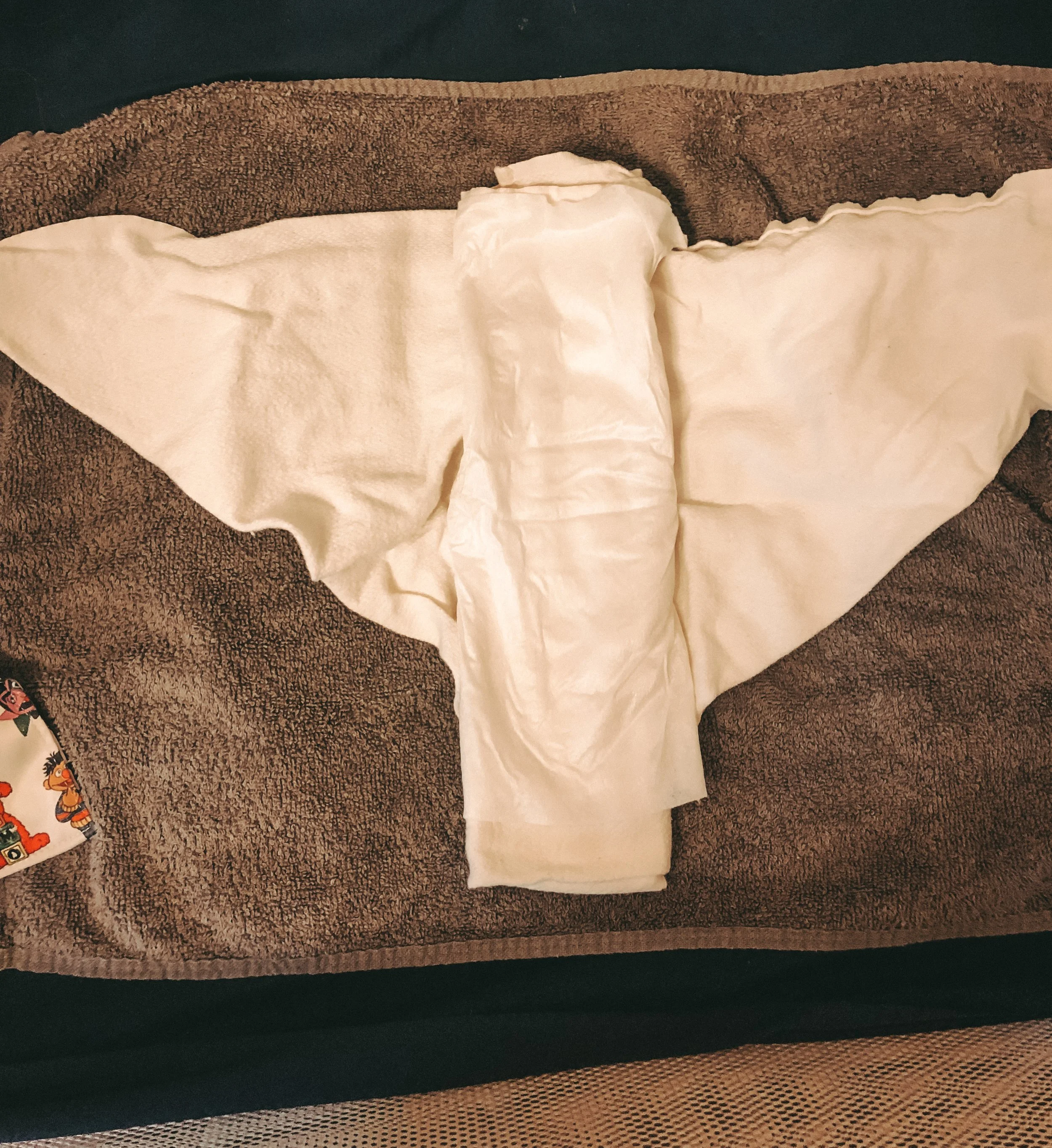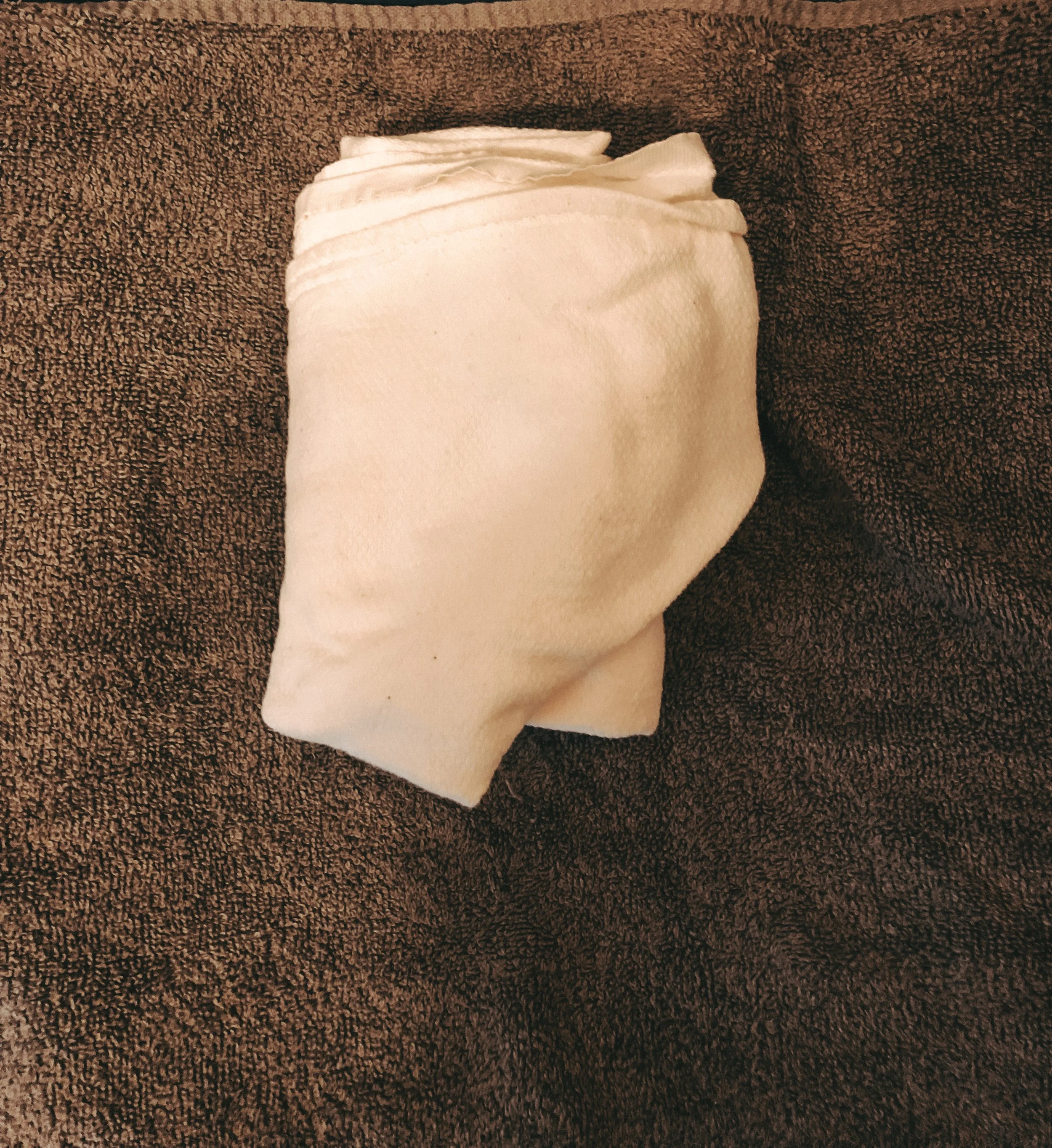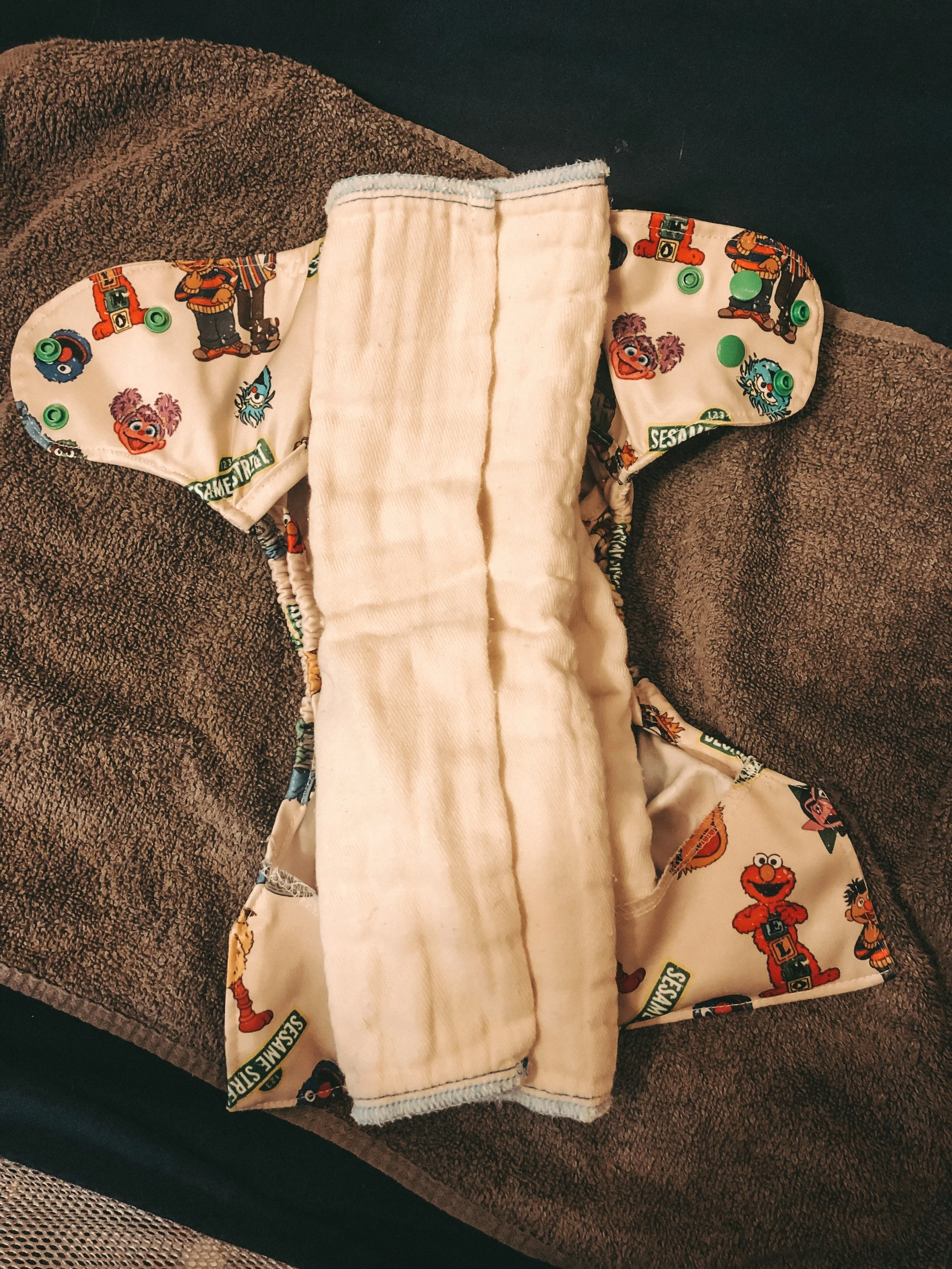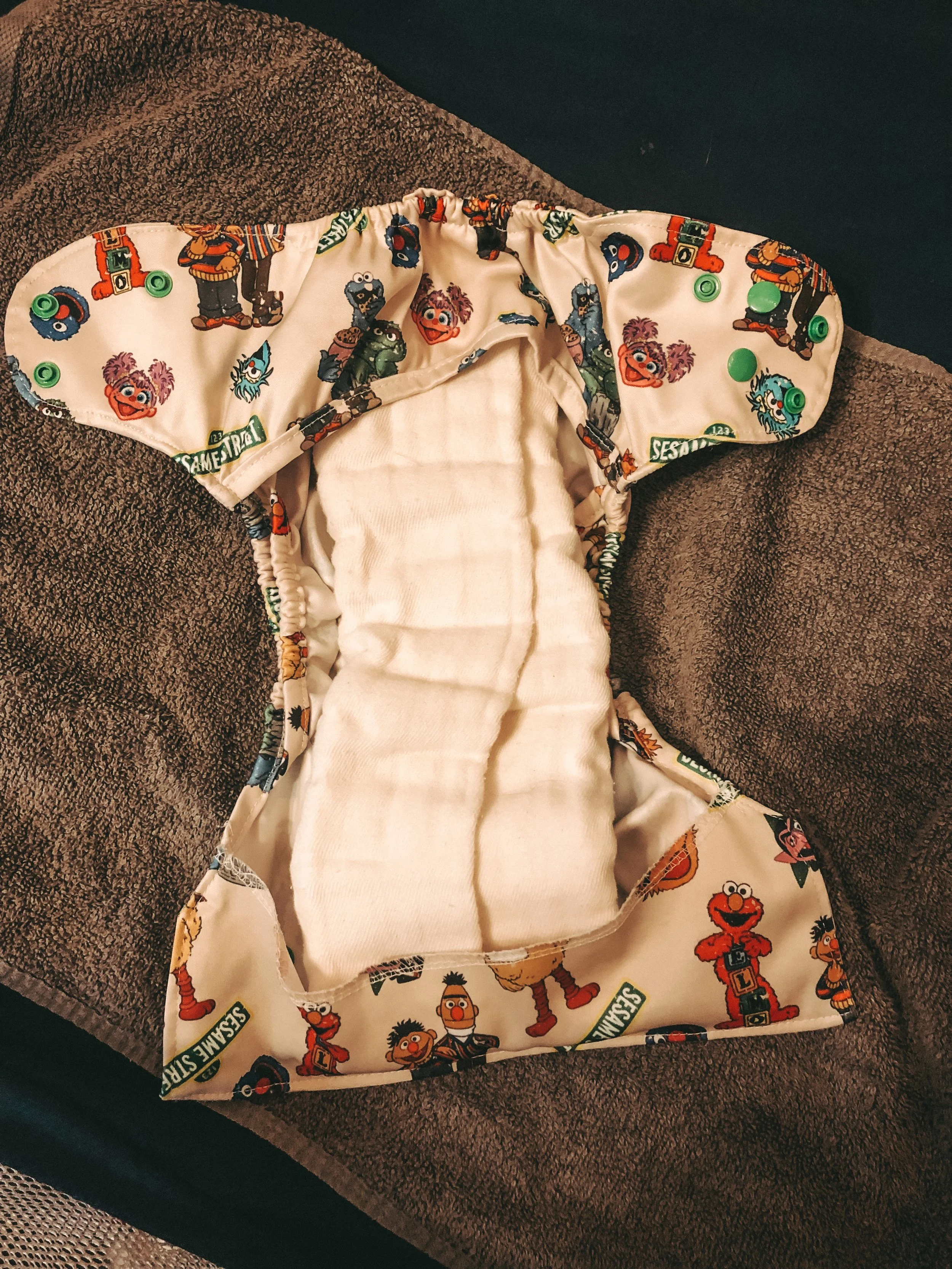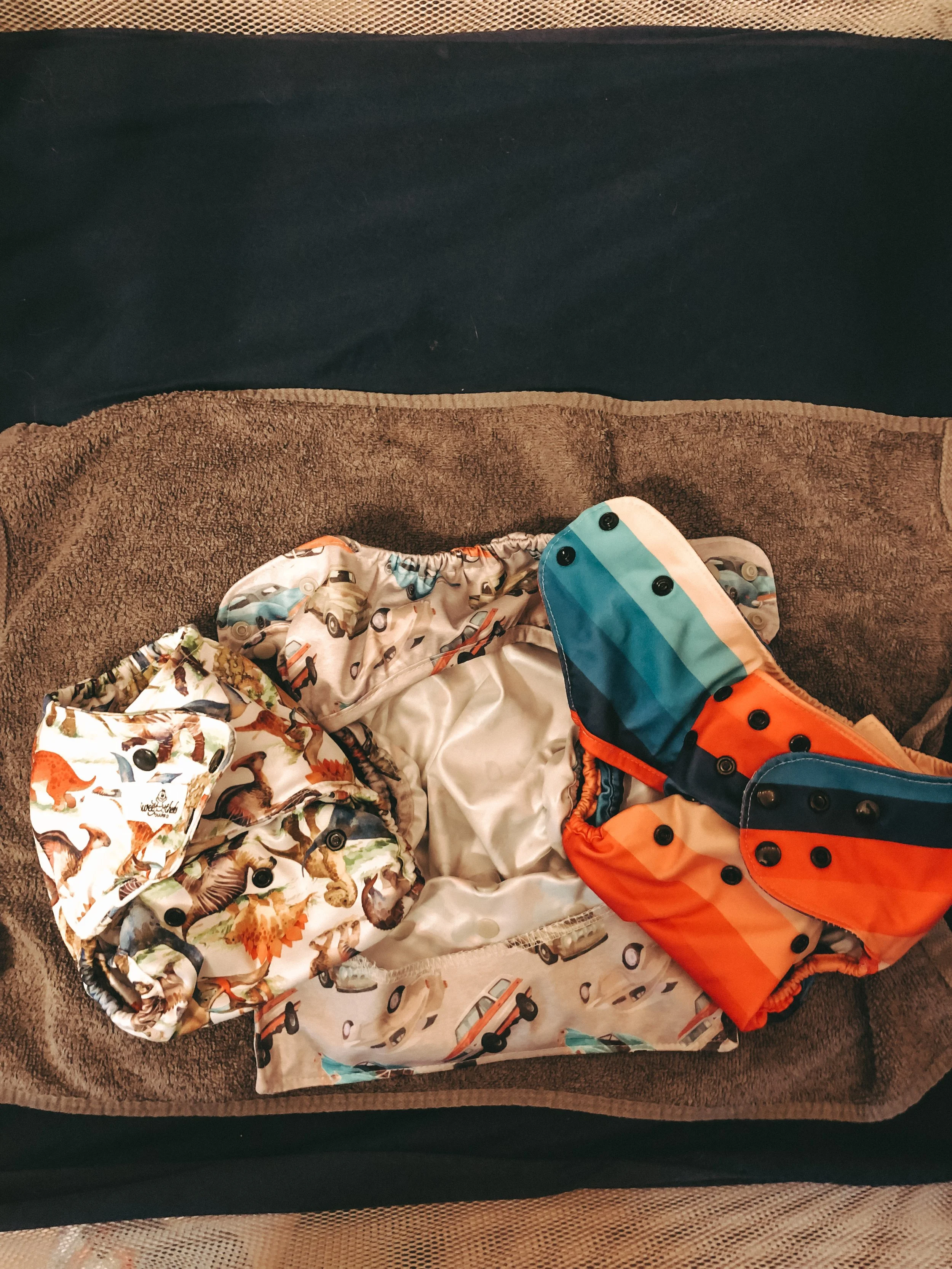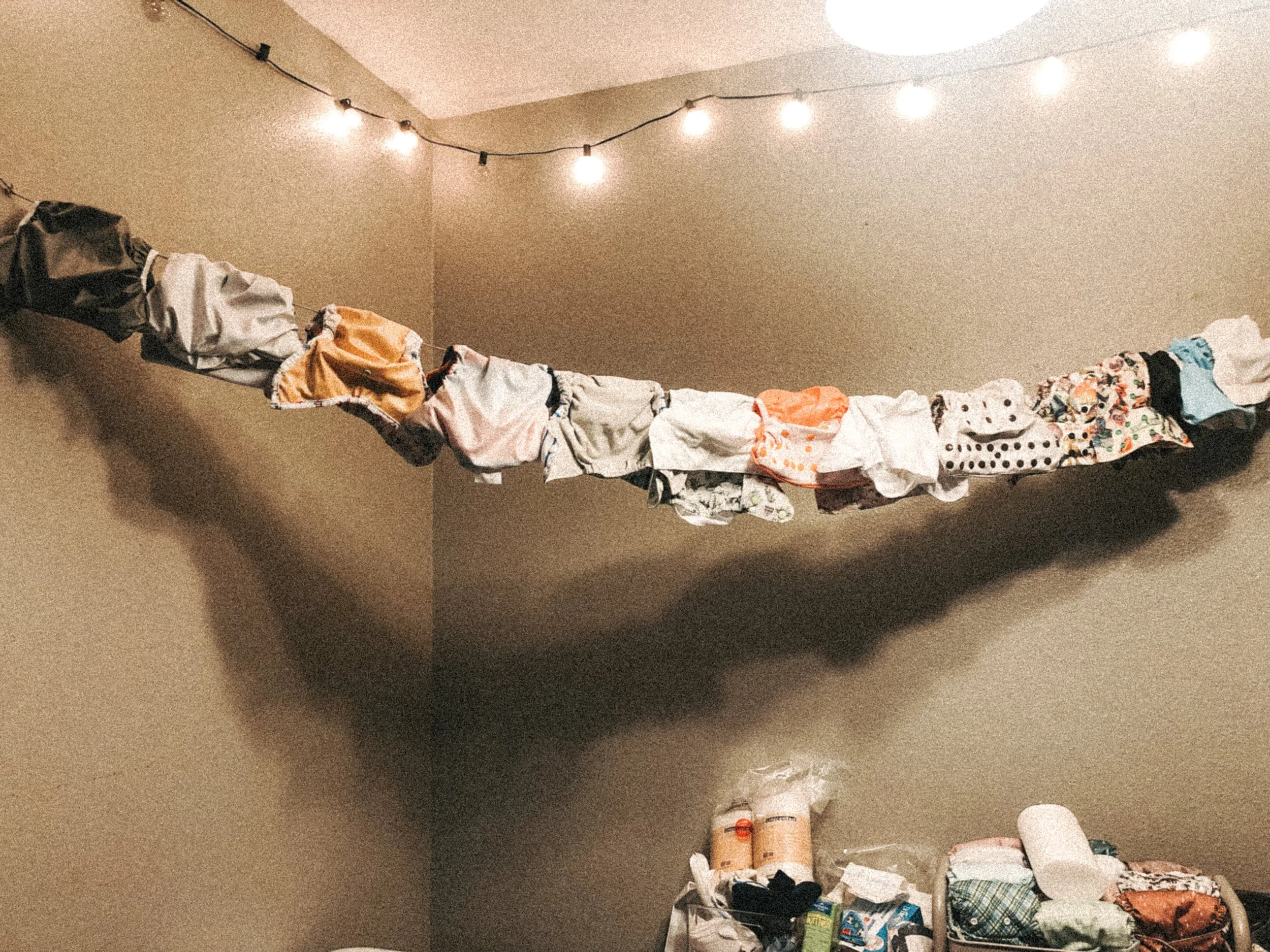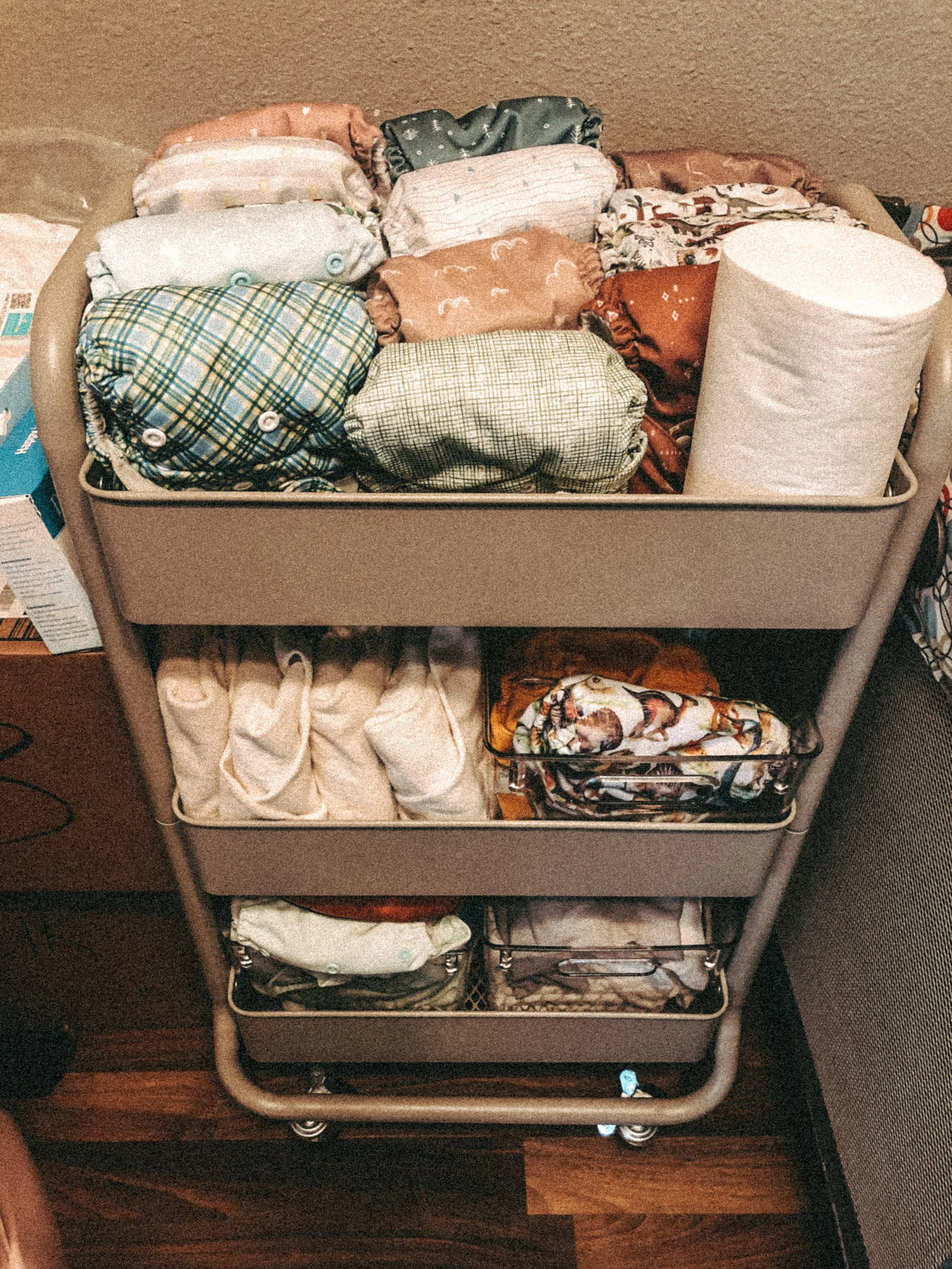Cloth Diapering
Disclosure: Some of the links to products below are affiliate links. I am not endorsed or sponsored by Amazon or any other brand. I am not paid to advertise or promote any of the products that I recommend. These are all products that I have personally purchased, tried, and recommend. Being an affiliate simply means that, at zero cost to you, I will earn an affiliate commission if you click through the link and finalize a purchase.
We’re All Just Doing Our Best!
I would like to start by addressing the competitiveness in the parenting community that spans across basically every choice you can make with your child— how you feed them, where they sleep, and apparently where they poop. So, let me tell you that we are a family that supports all parenting options and choices, as long as they are not detrimental to a child’s health and development. There is also an “all-or-nothing” mentality when it comes to parenting choices. Some feel strongly that if you are cloth diapering, you should never purchase disposable diapers—or that if you are using cloth diapers, you should also use cloth wipes. I think these expectations can be a bit unrealistic, and they lead to parents feeling like they have failed if they have to purchase disposables. I believe in moderation in all things. Full disclosure— we still always have a pack of disposables handy (these are the disposables we love for our son’s sensitive skin and for our wallets)! It is nice though, that a pack of 33 diapers lasts us a month or more now, instead of a week. We also use these disposable wipes. I say do what you need to do to maintain your happiness and sanity! At the end of the day, even if you only use one cloth diaper a day, instead of a disposable, you are saving your family money in the long run, and reducing your carbon footprint on the environment. All of that being said, this post is about how and why we choose to cloth diaper our son.
Why We Cloth Diaper
I would be lying if I said the cute prints and patterns weren’t a big part of it. Some people hate the look of the bulky cloth diaper. I think the big, cloth, diaper booty is so cute! We initially chose to start cloth diapers when our son was about 3 months old. Before then, the idea of cloth diapering was too much for me because we were in postpartum survival mode. Between spit-ups, blowouts, and my oversupply issue with my milk— there was already endless laundry. Committing to more laundry and work just wasn’t a viable option for me. But as the blowouts, spit-ups, and laundry became less overwhelming, I started to look into cloth diapers. There are three main reasons why I turned to cloth. The first is that our son has somewhat sensitive skin. If he wasn’t changed very frequently (every hour or so) while wearing a disposable, we would notice some irritation begin to develop. Another reason we choose to cloth is because it reduces our carbon footprint.
“Over 18 billion disposable diapers end up in landfills every year. Disposable diapers are the third largest contributors to landfills in the world.”, according to healtheplanet.com.
The last reason we choose to cloth diaper is that it saves us money! All of the supplies we needed to start cloth diapering costed us ~$250.00 and that will last us through the age of 2.5 years/potty training. The cost of disposable diapers is about $80 per month depending on where you buy your diapers and the kind you buy. Sources vary, but most report that cloth diapering can save you between $1,000 to $2,000 per year that your child is in diapers. That’s a family vacation!
How We Cloth Diaper
I had experience with cloth diapers before having my son from nannying for families who used them. I was familiar with the laundry routines and all they entailed, but what I wasn’t aware of is how many options exist for how you can cloth diaper. The cloth diaper brand, Charlie Banana, has this great article that explains, in detail, the different types of cloth diaper options and the pros/cons of each. The most popular cloth diapers are pocket diapers.
Mama Koala brand pocket diapers in photos above. Diaper shell beside a bamboo insert in the photo on the left, the insert buttoned and laid onto of the shell in the photo in the middle, and the insert stuffed into the shell pocket in the photo on the right.
I initially thought that these would be the diapers we used because of their popularity, and this option is the closest to putting on a disposable, in terms of ease and saving time. It was also the only type of cloth diaper I had used with kids I nannied, or seen friends use. I researched and talked to other cloth diapering parents and purchased twelve pocket diapers. Some parents recommend getting a huge stash of 50-80 pocket diapers so you can have them in rotation, to make them last longer and so you don’t have to do laundry as frequently, but I was trying to live my minimalist fantasy and committed to doing laundry every two days (in reality its every 3-4 days). I immediately got paranoid about whether or not the inserts were getting fully clean. To my knowledge (and my nose) they were! But I was paranoid about it. I was constantly smelling the diapers before putting them on my son. How did I know the layered fabric inside of the inserts were clean?! So, I looked into other cloth diaper options and found flats and prefolds to be the recommendation for ease of washing and drying (pocket diaper inserts can be stubborn to get fully dry in the dryer). You can see the flats and prefolds that I purchased linked in this post below!
Flats and Prefolds/Why I love and Use Them Most
The photo above on the left shows a flat diaper and a pocket diaper. The photos in the middle and on the right are my son wearing a flat diaper folded into the origami fold. Youtube link to a tutorial on how to origami fold here.
Many are intimidated by diaper flats because they are exactly what they sound like— a flat piece of fabric. You have to fold them into a shape to use them. There are all kinds of folds you can do to make a perfect custom fit for the size of your baby, how heavy they wet, or how often they have a bowel movements. Some folds are simple, like the pad fold, where you essentially fold the flat into a long rectangle and just set it into a cover. Others are a bit more complex (like the origami fold in the photos above) but I prefer them because they create a great seal around your baby’s thighs, which prevents stool from leaking into the cover. I play it by ear throughout the day— if I think my son has had about all the bowel movements he could possibly have in a day, I’ll just do a pad fold. I strictly used the origami fold during the newborn phase because he had a bowel movement with every feeding. Flats are definitely the most economical diaper option for many reasons. One is that they only come in one size, so you never have to buy more, unlike pocket diapers and prefolds that come in different sizes and fits, so you have to buy new sizes as your baby grows. The idea of that became really overwhelming to me, and it felt like it kind of defeated the purpose of saving a lot of money with cloth.
Diaper prefolds are similar to flats, but they’re slightly less work when putting on baby, since they are in the correct shape/prefolded to go on. The only con to prefolds when compared to flats is that you do need to buy them in different sizes if you plan to use them the traditional way. We chose to only buy them in one size, and now that they are too small to wrap around my son, we use them as pocket diaper inserts (they are more absorbent than the inserts that come with pocket diapers, and they are easier to wash and dry because they can be unfolded).
In the photo above on the left is a prefold diaper laid on a cover, in the photo in the middle it is folded into a pad fold and on top of the cover, in the photo on the right it is folded into a pad fold and set inside of the cover.
The biggest advantage of flats/prefolds to me is their versatility and affordability. They can be folded in so many ways, and can work with pocket diapers or covers, depending on how you fold them. I also like that they create less laundry than pocket diapers or AIOs (all-in-one diapers), because you can reuse the same cover with several diaper changes as long as it doesn’t get stool on it. You just give it a wipe down and let it air dry for a moment before putting it back on over a clean flat diaper. Some days I only use two covers all day, and other days it’s four . It depends on how many times my son has a bowel moment and if it stays in the flat or gets on the cover. With pocket diapers you HAVE to throw the entire diaper into the dirty bin after every change, since every part of the diaper is connected. Both flats and prefolds require a waterproof cover to be placed over them. My favorite cover brand is Sweet Cheeks.
Learning and practicing different flat folds can be intimidating. Don’t let it scare you! You are more than capable— it just takes practice (kinda like this whole parenting thing)! I have grown to love the ritual of folding them, and I origami fold them straight out of the dryer and put a bamboo liner on them so they are ready to grab and go when I need to change my son.
The photo above on the left is a flat diaper folded into a origami fold, with a disposable bamboo liner on top. The photo on the left is the same diaper folded up and ready to be stored.
I love the origami fold because you don’t need anything to keep he diaper closed, like Snappis or a safety pin, since you can just tuck the corners into the diaper (reference first photo above). Some people just fold them into a square and do the rest of the fold during each diaper change. Others fold them into a long strip and just put them into the cover, then on baby— (this is called a pad fold). The only con to this method of folding is I’ve found it doesn’t contain those blowouts as well as the other fold styles. Here is a link to a video that explains flats and fold styles in more detail. Here is a video of how to do my favorite fold. I recommend clicking through all of Jay’s Nest’s videos if you’re considering cloth! She helped me so much.
What you need to get started if you choose to use flats/prefolds
What you choose to purchase to get started will largely depend on your cloth diaper method, personal preferences in materials, lifestyle factors like how often you do laundry, your budget, and your baby’s elimination habits. The list below is what we bought to get started and what we currently use.
One of my favorite things about the cloth diaper community is there are resources for every budget. If you wanted, you could find everything you need second-hand on local buy/sell/trade groups. You just need to be sure to sanitize and strip any diapering materials you purchase second hand. Here is a great resource on sourcing used cloth diapers. The only diapers I purchased second-hand were a set of AIO (all-in-one) diapers. We have only used them in a pinch but I think they will be nice to have when he is older! Another advantage of the flats and cover cloth diapering style is that pretty much any clean, absorbant, skin-friendly fabric can be used as a flat/diaper inside of a cover. You can use old cotton t-shirts, receiving blankets, flour sacks— pretty much anything will work! That is another way to cut back costs if you desire. Before I purchased the Oso Cozy 100% Cotton Diaper Flats, I used old receiving blankets to see if I liked this method of cloth diapering and it was a great trial at little/no cost! You can see a receiving blanket that I folded into a cloth diaper in the photo below. Jay’s Nest on YouTube has some great videos on different fabrics and old household items that can be used as diapers.
If you’re like me, you received quite a few receiving blankets before baby’s arrival. If not, or if you’ve already gotten rid of them, they are cheap and easy to come by at yard sales and Facebook marketplace. I’ve seen plenty of people giving them away for free too. Taking all of that into consideration, below is the list that I have found necessary to get started on our cloth diaper journey!
The Diapers Of Your Choosing
The diaper equation (average number of diapers baby uses per 24 hr period for their age X the number of days between laundry = number of diapers needed). I bought 24 of these flats and 12 of these prefolds and this has been more than enough for doing laundry every three days. We usually use about 6-8 flats or prefolds per day now that he is older. Newborns go through about 10-12 diapers per day. If we had started cloth diapering now (6 month old baby) I would have bought less, but it is nice to have extra if I am behind on laundry, or if we have more blowouts than normal. My fiancé is a fan of the pocket diapers we have because he doesn’t have to do any intricate folding around baby during changes. We are both very involved parents, but because he is working full-time, I get the most practice with changes and have mastered the folding skills! I do like having our pocket diapers on hand for him, and for anyone else who may be helping out and changing our son. Pocket diapers are just easier and faster to put on baby. My fiancé also likes our prefolds. He tends to just pad fold (into thirds—reference photos below) the prefolds and put them into the cover. As I mentioned before, I have noticed the blowouts are more likely to escape with this method. I treat the prefolds as a great back up to flats if we’re really behind on laundry, and I also like keeping a few in the car with a cover incase we ever forget to restock the diaper bag.
Something to note— if you get organic cotton diapers, you’ll need to “prep” them by either boiling them in water for 20 minutes (this is what I did) and washing/drying on hot, or just putting them through several hot wash/dry cycles. This needs to be done with organic cotton because the natural oils on the fabric will hinder their absorbency. This also has to be done with all pocket diaper inserts before you use them. Bleached cotton diapers don’t require as much prep, because they have already been heavily processed. If you skip prep, you will have leaks because the diapers aren’t ready to absorb yet.
Above is a prefold diaper with a cover. Right to left: unfolded prefold, folded into a pad fold, tucked into the cover.
Covers
We usually only use 2-4 covers per day depending on if they get dirty. The general rule is you should have enough diapers/covers to cover you for the amount of days between when you plan to do diaper laundry. For us it’s 3 days. So using the diaper equation (4 diaper covers per day X 3 days = 12 covers needed) we need 12 diaper covers and a few extra. The amount of covers you use in a day depends on if it gets dirty or not. If not, you can just wipe it dry and use the cover with the next clean diaper— which really cuts back on laundry load size! I purchased covers from Sweet Cheeks and these covers from amazon.
The photo above is of 3 diaper covers from the brand Sweet Cheeks.
Snappis / Closures
This one is really optional depending on how you plan to fold your diapers around your baby. If you only use prefolds, its a good idea to use closures to keep the diaper around baby and in place. I purchased these snappis. We don’t use them often, but they are nice to have when we need them! You can also use old school safety pins, but I was too scared I’d poke my baby—or myself!
The photo above on the left is a flat with a snappi closure. The photo on the right is a prefold with a snappi closure.
Stay Dry Liners
This is already built into pocket diapers. It is the layer of fabric that touches your baby’s skin (the part that the inserts are stuffed into). They aren’t a necessity, but I think they help baby feel more comfortable, and they help keep diaper rashes at bay. You can use disposable liners, or reusable liners made of a stay dry material such as fleece. You can cut an old fleece blanket into strips to save money, or purchase fleece liners. We use both, depending on which diapers we are using. We use these disposable bamboo liners with flats and prefolds, and these reusable fleece liners with our pocket diapers. Using the reusable liners helps protect our pockets from staining, since most pocket diapers are crisp white on the inside and the reusable liners are much thicker than the disposable liners.
Wipes
You can use disposable wipes, or reusable wipes. We use Millie Moon brand disposable wipes. We previously used the brand Water Wipes, but I prefer the Millie Moon brand because of their size and softness. Both brands are made of 99% water. If you are interested in cloth wipes, these are a great option!
Wet Bag/ Dirty Bin
This is another optional purchase. Some people strictly keep soiled diapers in a wet bin until laundry day. I think they are good to have on-the-go for storing clean and dirty diapers in until you get back home. Look for wet bags with two separated pouches, so that your dirty diapers stay away from your clean diapers. I bought this pack of two. We only use them when we’re out of the house. They also make a great bag for sweaty gym clothes, dirtied clothes from playing outside, or soiled clothes from baby diaper leaks! When we’re home we use this simple, cheap, collapsable laundry hamper and keep it in the garage. I like that this type of hamper allows air flow through the diapers to keep mildew and other yucky bacteria that thrive in sealed, moist environments at bay.
That’s it!
That’s everything we use to cloth diaper our baby. If you choose to use pocket diapers, your list will be even shorter since most pocket diaper brands send you everything you need in a set with pocket shells, inserts, and some brands include complimentary wet bags. I personally love Mama Koala pocket diapers. They have microsuede lining to keep baby dry and comfortable, and they come with bamboo viscose inserts that perform much better (in my opinion) than microfiber inserts that come with other brands. Please note that pocket diaper inserts, especially those made of microfiber should NEVER be directly against your baby’s skin. Microfiber is so moisture wicking that it can dry out your baby’s skin and cause irritation and rashes.
Cloth Diaper Laundry
The photo above on the left shows our clean diaper covers and pocket shells line-drying outside. The photo on the left shows our clean covers and pocket shells line drying indoors.
If you google how to do cloth diaper laundry a TON of information will come up. Honestly, it overwhelmed and intimidated me. All you really need to be mindful of are these things:
How often are you willing to do laundry? I recommend ever 3-4 days at most to prevent staining, mildew, or other issues, but some go as long as a week without problems.
How large will your laundry load size be? Dirty cloth diapers should be washed on their own. I occasionally throw in dirty towels or rags (nothing that has been used with heavy cleaning products though). You need to make sure that the load size is large enough to agitate well and clean the diapers. But you don’t want such a large load size that your washer can’t get them clean. Using too much detergent for your load and soil size can lead to detergent build up in your washer and on your clothes/diapers. I have found that 18-24 diapers is best for our laundry routine, which is the amount of diapers that we accumulate over a few days.
What detergent will you use? We use this Arm & Hammer Sensitive detergent. I recommend non-fragranced, sensitive skin detergent. After all, it is going on your baby’s bottom! You also want to avoid fragrance so you are sure that nothing is masking odors, and that your diapers are truly getting clean. It is also important to find the right detergent ratio to use. This will depend on your washing machine and laundry load size, as well as the type of detergent you use— here is a great resource to reference on this.
How will you dry diapers? There are differing opinions on whether or not cloth diapers that have elastic (like in the leg gussets of covers/shells) and waterproof PU (on covers and pocket diaper shells) should be put in the dryer. Some say they should only be air dried to preserve the waterproof lining and elasticity of the gussets. Others say throw them in the dryer with the inserts or flats! We put our flats, inserts, and prefolds in the dryer on high heat and hang dry covers and the shells of pocket diapers. It’s really up to you!
Find your wash routine. This was the most overwhelming part, because as I mentioned above, there is so much information out there. There are even calculation sheets that ask you to weigh your dirty laundry. I initially was going to try and follow a worksheet, but I just went with my best judgement and we haven’t had any issues! Our wash routine is:
Dump dirty cloth diapers into washing machine (no need to rinse or spray stool from diapers until baby is eating solids, as breastfed baby stool is water soluble).
Add half a capful of detergent.
Wash on heavy soil setting, COLD water wash (a cold wash first will minimize staining), with presoak and extra rinse setting.
Repeat another heavy soil cycle with half a cap of detergent, but with HOT water—presoak and extra rinse.
Put inserts, prefolds, and flats in dryer on highest heat setting.
Hang dry covers and pocket diaper shells.
Once everything is dry, we stuff inserts back into pocket diaper shells and fold our flats into the shape we need with a disposable liner so they are ready to grab and go!
I also run vinegar through our washer every couple of weeks to clean it out, remove detergent build up, and to prevent mold from growing in the detergent cup dispensers. I have always done this with my washers to keep them working well and clean.
I hope all of this information has been helpful! There are tons of other resources to explore if you’re looking into cloth diapering. If you have any questions, please feel free to reach out to me and I’ll do my best to help you out!
Above is a photo of our 3-tier diaper cart. On the top shelf are pocket diapers and a roll of disposable liners. The second shelf has refolded diaper flats on the left and covers on the right. The bottom shelf has things we rarely use like our all-in-one diapers and a bin of extra fabrics that can be used as a diaper or to boost absorbency.



